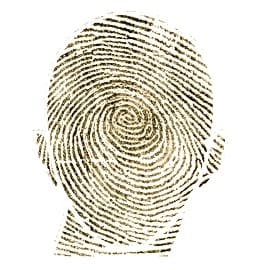When writing this piece I was asked to think in terms of recycling rather than producing something new, the usual obligation of academics writing for publication. It made me think. Put simply, facial transplantation can be seen as the recycling of faces, a scenario reminiscent of John Woo’s film, ‘Face/Off’. The facial mask and connecting corporeal material is removed from a dead person. The material is then transported and surgically reconnected to the body of another human. Since the first partial transplant in France (2005) over 20 of these experimental transplants have been conducted across the globe in, for example, France, America, China, Spain and Turkey. Years of research have gone into developing this highly complex set of surgical procedures, made possible by developments in immunosuppressant drugs.
Transplantation has so far been reserved for those with the most extreme facial ‘disfigurements’ who fit the corporeal and psychological criteria. The procedure has been described by surgical teams as quality-of-life enhancing, rather than life saving, a desire that has, in some cases, been underpinned by biomedical conceptions of disability. There is some disagreement about whether prospective patients can give truly informed consent at this early stage in the history of such surgery, especially as immunosuppressant drugs can shorten life even when used correctly. Concerns about recipient and patient anonymity have also been raised as most recipients so far have been subject to media scrutiny. Furthermore, there have been concerns about the likelihood of the recipient looking like the donor, though these have been quashed by surgical teams.
Nonetheless, some clinical and ethical authors have suggested that identities are located either corporeally within or on the outer surface of the face, so that when transplantation occurs, identity transplantation will follow.
As part of the literature review for my PhD research on the subject, I read 60+ transplant papers, on subjects ranging from surgical procedures to ethical discussions, and a number of themes emerged.
Scholars writing on the subject agree that faces are deeply significant for humans on numerous levels – from the individual to the social – though little anthropological evidence has so far been produced with the goal of exploring this idea in depth. Though some ‘disfigurement’ and transplant authors refer to ‘the face’ (Lantieri, 2012, p.250) as a given, there is no single or ubiquitous definition of the term (Levinas, cited in Critchley et al., 2002), nor, apparently, are there any intrinsic or universal values attached to faces (Perpich, 2010, p.185). Despite this caveat, however, definitions of face generally incorporate notions of façade, personhood, agency, interaction and cognisance (Perpich, 2010), which thereby involve identification, appearance, self and other, activity and constraint.
It is no surprise that these phenomena are also embedded within definitions of embodiment (Merleau-Ponty, 1962; Csordas, 1994), or that they are reflected in my primary research findings. Faces also play diverse roles in social reproduction, for example by enabling the self to be protected during ritualistic and potentially dangerous transitional ceremonies. Anthropologists (Lévi-Strauss, 1963, cited in Pollock, 1995) and Egyptologists (Sorrel, 1973, cited in Tseelon, 2001), for example, have found evidence of facial masks being worn during ritual ceremonies or after death in order to protect the wearer from harm and to provide safe passage from one transitional status to the next.
Faces have also been ‘read’ to allay fears by providing information on the character of unknown others during periods of rapid social upheaval, such as the move from countryside to towns and cities during the industrial revolution in Britain (Giddens, 1991). During this period the pseudo-sciences of physiognomy and phrenology became popular (Twine, 2002; Popovic, 2007) as people tried to reduce their ontological insecurity (Giddens, 1991) by trying to make sense of the moral character of unknown neighbours and work colleagues. Finally, faces have been utilised to justify economic and political inequality, or to subvert it. Drawing on Deleuze and Guattari’s concept of faciality (1987, p.168), Benson (2008) has illustrated how the faces of migrant farm labourers in Brazil have been associated with a kind of moral dirt by powerful elite groups. The association, which is perpetuated by the print media, not only dehumanises them but also helps to keep their wages low and working conditions poor, thereby enhancing the profit margins of large farming conglomerates and keeping the price of exported produce low for the US market.
On the other hand, on the basis of 13 ethnographic narrative interviews conducted with facially ‘disfigured’ adults in Britain I have found that identities are not located within or on the outside of faces, so they cannot be transplanted between humans. Facial recognition is not the same as identity, as some transplant papers seem to imply (Modgil, 2011), and as my participants’ stories revealed. Boas (1966, cited in Pollock, 1995) found when studying the Kwakiutl that not just the face but the whole body was considered important in enacting and displaying ritualised identity transformation. My conclusions echo this finding.
So, where does this leave us? Faces carry a special societal and individual significance; however, it is the whole person that is meaningful to identity creation and shift, not just the face.
The extent to which the participants I interviewed were able to successfully negotiate revised embodied identities was influenced by the cause and context of the ‘disfigurement’, the extent of corporeal disruption and the extent to which the person was able to recognise their body-self, both performatively and visually, during the continued aftermath of transfigurement. I would like repeat the research with people who have undergone a facial transplant, to explore the participants’ initial experiences of identity shift. I predict that their life experiences will also be significant in the creation and recreation of embodied identities over the life course. We do tend to recognise each other through facial familiarity, but our faces do not define us as we move through life, nor should they be allowed to.
References:
BENSON, P. (2008) El Campo: Faciality and Structural Violence in Farm Labor Camps. Cultural Anthropology, 23, 589-629.
CRITCHLEY, S. B., ROBERT, PUTNAM, H. WALDENFELS, B. (2002) The Cambridge Companion to Levinas. Cambridge Cambridge University Press.
CSORDAS, T. J. (1994) Embodiment and experience : the existential ground of culture and self, Cambridge, Cambridge University Press
GIDDENS, A. (1991) Modernity and Self-Identity. Self and Society in the Late Modern Age., Cambridge, Polity.
LANTIERI, L. (2012) Face Transplant : A Paradigm Change in Facial Reconstruction. Journal of craniofacial surgery, 23, 250-253.
MERLEAU-PONTY, M. (1962) Phenomenology of Perception, London Routledge & Kegan Paul.
MODGIL, A. (2011) Identity Transfer and Identity Restoration in Facial Allotransplantation. ePlasty: Open Access Journal of Plastic Surgery, 11, 171-189.
PERPICH, D. (2010) Vulnerability and the ethics of facial tissue transplantation. Journal of Bioethical Inquiry, 7, 173-185.
POLLOCK, D. (1995) Masks and the Semiotics of Identity. The Journal of the Royal Anthropological Institute, 1, 581-597.
POPOVIC, M. (2007) Reading the Human Body: Physiognomics and Astrology in the Dead Sea Scrolls and Hellenistic-early Roman Period Judaism, Leiden, Brill
TSEELON, E. (Ed.) (2001) Masquerade and Identities: Essays on Gender, Sexuality and Marginality, London, Routledge.
TWINE, R. (2002) Physiognomy, Phrenology and the Temporality of the Body. Body & Society, 8, 67-88.







I wish to commend Ann-Marie for her important dissertation work and her realisation of the centrality of the face (and its transplantation) in current re/articulations of concerns with personhood and identity. I believe she is correct in suggesting that identity itself will not be transplanted along with the composite allograft of facial tissue. This does not mean, however, that patients have and will not experience both difficulties and pressure to a adapt to their “new faces”. The comments of Isabelle Dinoire, the first person to undergo the operation, is exemplary: ‘You know it’s yours but at the same time “she” is there … I am making her live but that hair is hers.’ In a latter post I will examine Ms Dinoire’s story in more detail; reading it alongside the published accounts of other patients and donor families suggests we need to develop a nuanced heuristic through which to make sense of the complex articulations of self, responsibility, and ethics in face transplantation. Elsewhere, in my recently published essay “On Face Transplantation” (Palgrave Macmillan 2014), I have attempted to sketch the parameters for such a mode of inquiry. In my following post, I will attempt to respond to Anne-Marie’s fine genealogy of “faciliaty” and recent work of disfigurement by drawing on this sketch.
Yesterday I sat to compose my reply and ponder more what I felt unsettling about Anne-Marie’s analysis. The result was some six pages of thoughts and extracts from my above recent monograph. (Perhaps they will be turned into something more official at a later date.) At the centre of my thoughts was the question of the intersubjective, in particular, “the ethics of the intersubjective” as the likes of anthropologist Michael Jackson has explored. Jackson (2013:13) writes: “In developing an ethics of the intersubjective, we need a method of study that avoids prejudgments as to what is right and wrong, good and bad, and thus draws us deeply into the complexity of everyday situations.” I realise that it is exactly this complexity that Anne-Marie want’s to take us into, yet I couldn’t help but feel her approach was limited (1) by an overall focus on the “individual” human and its identity and (2) by framing the piece as a response to the concerns of publics’ vis-à-vis face transplantation. As Lesley Sharp (2006) has shown, in transplant medicine new forms of embodied intimacy emerge between recipients and donor families, transforming strangers into kin. Martindale’s post would have been strengthened by acknowledging the intimacy that accompanies organ transplantation. I have drawn analogies between between Sharp’s work and what I see taking place in face transplantation (Taylor-Alexander 2014: 37-40). Second, Jackson’s “ethics of the intersubjective” asks us to consider what is taking place in the relationships between donor, donor families and recipients. What does it mean that face transplant recipient Isabelle Dinoire has said:
I appropriated [the graft] insofar as it is I that managed to make it move. [But] forget it? No. I don’t want to and I won’t do it. She exists in me. She is and she will always be a part of me. She is my saviour, like a twin sister. This is the only way it can be […] For the doctors, it [the transplant] should be integrated, but it is still not mine. I don’t know. It is hard to explain. What I know is that I don’t want anyone to damage it, given what the donor offered me. It is too big. Now I am fighting for two!
Instead of asking “Does identity transfer take place in face transplantation?” why not instead ask “(Why) Does it matter if identity transfer takes place in face transplantation?” Why are patients encouraged to “appropriate” the graft and have it become them? Asking these question, I believe, will help us better understand how face transplantation holds the potential both to reproduce and unsettle the image of the complete body as good body that exists in contemporary biomedicine. In finishing, I should note that a number of scholars have already begun to examine how face transplantation, and on the life of patients and donor families within it, has explored the rearticulation and profound upheavals of notions of health, identity, rights, self, and responsibility that are taking place in and through the field (Delaporte 2013; Lafrance 2010; Talley 2014; Taylor-Alexander 2014).
References:
Delaporte, F. (2013). Figures of medicine: blood, face transplants, parasites. Fordham University Press.
Jackson, M. (2013). Wherewithal of Life: Ethics, Migration, and the Question of Well- Being. Berkeley: University of California Press
Lafrance, M. (2010). ‘“She Exists Within Me”: Subjectivity, Embodiment, and the World’s First Face Transplant.’ In T. Rudge and D. Holmes (Eds.) Abjectly Boundless: Boundaries, Bodies and Health Work, pp. 147-162. London: Ashgate
Sharp, L. (2006). Strange Harvest: Organ Transplants, Denatured Bodies, and the Transformed Self. Berkeley: University of California Press.
Talley, H. L. (2014). Saving Face: Disfigurement and the Politics of Appearance. New York, NY: NYU Press.
Taylor-Alexander, S. (2014). On Face Transplantation: Life and Ethics in Experimental Biomedicine. New York, NY: Palgrave Macmillan.